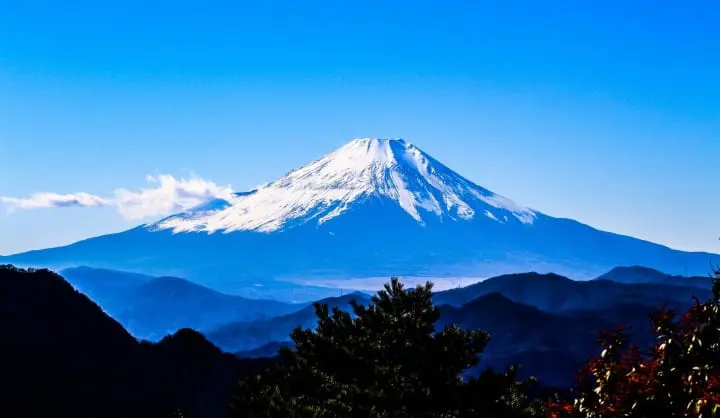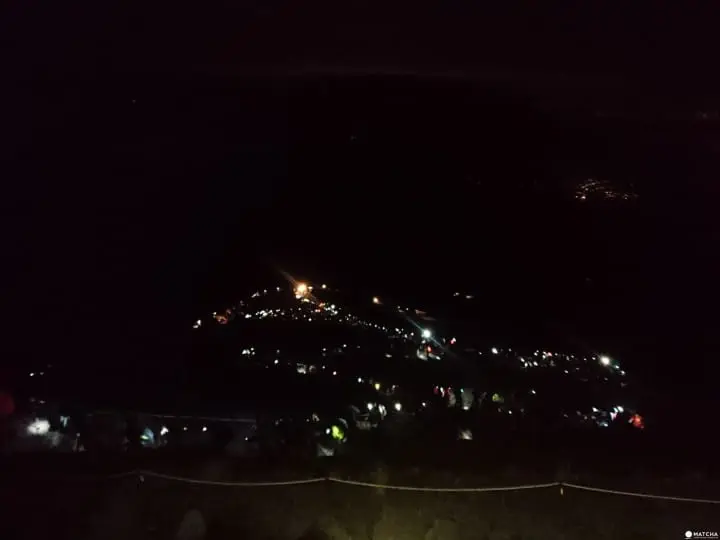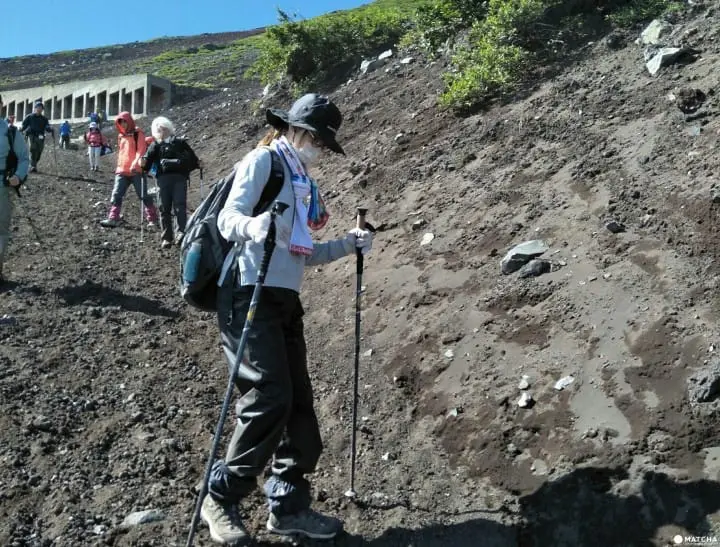Climbing Mount Fuji on the Yoshida Trail: A Complete Guide

Climbing Mount Fuji can be a life-changing, marvelous experience. Read this article to find out how to prepare properly for this challenge. You will also get some glimpses of the things you will encounter on your way to the summit.
Mount Fuji was registered as a World Heritage Site in June 2013 and is one of the most popular sights in Japan. This article will tell you everything you need to climb Mt. Fuji via the Yoshida Trail.
A Guide to Climbing Mt.Fuji
1. Yoshida Trail: What and Where is it?
2. The Best Season to Climb Mount Fuji
3. How to Prepare for Climbing Mount Fuji
4. Necessary Equipment
5. Things That Might Be Useful
6. Climbing to the Summit of Mt. Fuji
7. Climbing Schedule
8. The 5th Station: Start your Climb
9. From the 6th to the 8th Station
10. Stay at a Mountain Cottage
11. Early in the Morning, Make your Climb to the Summit
12. Fujisan Ohachi Meguri: The Crater of Mt. Fuji
13. How to Descend from the Summit of Mt. Fuji
Yoshida Trail: What and Where is it?
The Yoshida Trail is the most hicked trail of Mt. Fuji. It starts at the Fuji-Subaru Line 5th Station and leads to the summit from the north side of Mt. Fuji from the Yamanashi Prefecture.
One of its characteristics is that the ascent trail is different from the descent trail. The ascent trail offers many mountain hoods for resting. However, the descent trail only offers a couple of hoods so it is best to prepare to make your way down in one go.
Most people who climb Mt. Fuji use the Yoshida Trail.
From May 2024, accessing the Yoshida Trail on Mount Fuji requires a reservation through the official Mount Fuji climbing website (available in Japanese, English, traditional Chinese, and simplified Chinese).
The Best Season to Climb Mount Fuji

The major two hiking trails on Mt. Fuji are open for two months according to the following schedule:
Yoshida Trail (the starting point is in Yamanashi Prefecture): July 1 - September 14
Fujinomiya - Subashiri Trail (from the Shizuoka Prefecture side): July 10 - September 10
The best season for climbing Mt.Fuji is right after the rainy season, namely from around July 20 up through the beginning of September. Please be aware that it is very crowded on weekends and during the Obon holidays in mid-August.
If you would like to see the sunrise from the top, make sure you plan your climbing schedule on weekdays and not during the Obon festival, when the mountain will most likely be visited by crowds of people. The mountain cottages and other accommodation facilities in the area tend to be fully booked, so try to book as soon as they start taking reservations on the internet (the schedule varies from one facility to another).
How to Prepare for Climbing Mount Fuji
If you plan to reach the summit of Mount Fuji, you will be climbing at a very high altitude. In addition, you must be prepared for sudden and severe weather changes on your way to the top. We advise you to ask at a sports shop or rent a Mount Fuji climbing set using an online rental shop.
Necessary Equipment
- Trekking shoes (high-top and waterproof)
- Big Backpack
- Backpack cover (useful to prevent the content from getting wet on rainy weather)
- Headlamp (flashlights are less recommended, as you might need to use both your hands when climbing. A source of light will be needed even if you climb during daytime)
- Rainwear (jacket and trousers made of waterproof-breathable material)
- Drinking water (1 litter)
- Energy bars (I brought energy food in jelly and powder form)
- Sunglasses, sun protection goods (the higher you climb, the stronger is the sun)
- Medicine (painkillers are important to ease the headache and toothache you might feel from mountain sickness)
- Plastic bags (for trash and spare clothes)
- Towels (for wiping your sweat and preventing clouds of dust)
- Coins (the toilets on the way up require a fee)
- Training wear
- Cold weather gear (fleece, down, sweaters, etc.)
- Shirts, pants, and underwear (water absorbent and quick-drying, not cotton)
- Hat (to prevent sunlight and cold)
- Extra Socks (thick and sturdy)
- Gloves (in some rocky areas you will need to climb using your hands; you will need gloves both for cold weather and to protect your hands)
Things That Might Be Useful
- Trekking Pole (will come in handy in rocky areas and on the way down)
- Athletic tights (to support your muscles in the case of moves that you don’t usually do)
- Heat-retaining sheet (also called "emergency sheets", they can be used in cottages and while resting)
- Portable oxygen (helps in case of bad headaches)
- Disposable heating packs, also known as kairo (at the eighth station of Mt. Fuji it is freezing even in July!)
- Toothpaste and gum (many cottages have no washrooms)
- Earplugs (you will share the room with many people at the cottage, so earplugs will help you have a better sleep)
- Wet tissues (there are no shower rooms in the cottages)
There are coin lockers near the fifth station of Yoshida trail. You can leave the luggage that you don’t need to climb further here.
Climbing to the Summit of Mt. Fuji
Please note that this is just a recommended schedule. For each climber, the schedule might be slightly different, depending on the weather and health conditions.
There are four major trails for climbing Mt. Fuji,Yoshida, Fujinomiya, Subashiri, and Gotenba. As mentioned before, we chose the Yoshida trail, which is also the most popular one.
1. Climbing Schedule
9:00 - Arrival at the fifth station
10:00 - Start climbing from the fifth station.
17:00 - Arriving at the cottage at the eighth station. Have dinner and some rest.
2:00 - Start climbing towards the summit.
4:30 - Arrive at the top. Visited the area around the crater.
5:00 - Watch the sunrise
9:30 - Start climbing down.
13:00 - Arriving at the fifth station.
2. The 5th Station: Start your Climb

This is how the summit looks from the fifth station. It looks like you only have to do a short run to get up there. However, you have to climb for seven hours to get there.

The fifth station is an open area where many hikers buy souvenirs, have a snack, or prepare to climb up. Climbers with less equipment can enjoy the hiking trail up to the sixth station.
3. From the 6th to the 8th Station

Prepare for more serious climbing from the sixth station on. Try to concentrate on breathing in and out deeply, and climbing at your own pace. The path isn’t completely safe, so be careful of falling rocks and slippery areas.

From the eighth station, the path becomes partly rock climbing. The ropes or chains are only for showing the way, so be careful to step only on secure rocks.
4. Stay at a Mountain Cottage
There are only a few cottages on the Yoshida trail. I recommend making a detailed plan like “Sleep at the X cottage of X station, and start climbing at XX:00 AM to see the sunrise from the top!”. You should move based on that plan, making sure you have enough time to go to the cottage you have in mind and rest there.

I stayed at Taishi-kan, the cottage on the eighth station at 17:00 and had dinner there as well as some rest. I started climbing to the summit at 2:00 AM. At the cottage, the average price for a cup noodle soup is 700 yen, and 500 ml bottled drinks are 500 yen as well (*prices depend on the altitude). To use the toilet you will be required to pay a 100 yen fee, some toilets even require 200 yen.
Toilets are usually either bio-toilets (decomposed by a microorganism) or the simple sewage type. The picture above is the simple sewage type. You will have to flush by using this flushing gun. Please try to use as little water as possible because water at high altitudes is precious.
When the cottage is crowded, there will be three people sleeping on two square meters. There is no place to put your luggage so you will have to hang it up. You will need to sleep and stay without using much space.
The blankets may be damp and the air will be fairly cold (2-3 degrees Celsius), so you may want to use disposable heating packs and emergency sheets. At cottages, a one-night stay without meals will cost 5,000 - 8,000 yen, while a stay with meals included will cost about 1000 yen more. You should definitely book your stay in advance. Otherwise, there is a possibility of no place to rest when you will be really tired.
5. Early in the Morning, Make your Climb to the Summit
If you want to see the sunrise from the top of the mountain, starting from the eighth station at about 2:00 AM is probably a good idea. If you’re climbing during the weekend, it might be better to start even earlier, in order to avoid the crowds.
There are a couple of signs showing the way and indicating the stations in four languages: Japanese, English, Chinese, and Korean.
Some people feel mountain sick after sleeping in the cottage. If you get sick, try to relax, take deep breaths, and rest for a while.
If the mountain sickness is too bad for you to continue, don’t worry. Even from the area around the eighth station, you will still be able to see the sunrise clearly. Afterward, you can just move to the trail going downhill.
Rocks are lined with icicles around the ninth station, even in mid-summer. The temperature is between 2 and 5 degrees Celsius. People who don't bring enough cold weather gear might feel very cold and become sick around here. Be sure to prepare plenty of cold-weather gear. The road leading up to the summit is generally not very rough. It might just be a little hard to breathe.
Climb past the lion dogs and the torii gate to reach the summit! There is a shrine called The Shrine on The Summit of Mount Fuji (Fujisan Chojo Okumiya). There are also souvenir shops and restaurants nearby.
However, this is not the real mountain summit. For the real one, you have to climb a little further.
6. Fujisan Ohachi Meguri: The Crater of Mt. Fuji
Fujisan Ohachi Meguri is the area around the crater of Mt. Fuji. The Mount Fuji Weather Station at the edge of the crater is said to be the highest spot on Mt. Fuji. If you’ve come this far, please don't forget to take a walk around the area of the crater.

There are no fences around the crater, so please pay the utmost attention and walk around slowly.
Here is the Mt. Fuji Weather Station. There is a stone monument that says “Here is the summit of Mt. Fuji”. It is a great place to take a picture! There is also a post office in the area of the crater. How about posting a letter to someone from the top of Mt. Fuji?
7. How to Descend from the Summit of Mt. Fuji
After enjoying the mountaintop, prepare to return to the base.

The trail for climbing down is different and doesn't have rocks or cliffs. The same kind of road continues forever. Several people climb down while listening to music. The sand and dirt stir up heavily, so you should wear a mask and prepare for the fact that your clothes will get dirty. You will reach the fifth station in approximately three to four hours.
Enjoy Climbing Mt. Fuji
How did you like this introduction to the Yoshida Trail to climb Mt. Fuji? Ultimately you will probably be able to experience much more than only the things mentioned in this article.
Climbing Mount Fuji gives you the chance to meet people from all over the world and a feeling of self-accomplishment. You will get the chance to see landscapes you have never seen before.
Why not challenge yourself to climb Mt. Fuji? It will surely be a marvelous experience that might change your life.
Please remember that accessing the Yoshida Trail on Mount Fuji requires a reservation through the official Mount Fuji climbing website.
Read also
Main image by Pixta
海に潜ったり、仏像を見たり、世界中を旅するのが大好きな日本人です。特にお気に入りの仏像は奈良県中宮寺の弥勒菩薩です。今年はさらに50体以上の仏像を拝観したいです!












































![[2026] Top 5 Strawberry Picking Spots in Tokushima, Naruto| Farms and Access Guide for January to May](https://resources.matcha-jp.com/resize/720x2000/2025/03/06-227165.webp)

